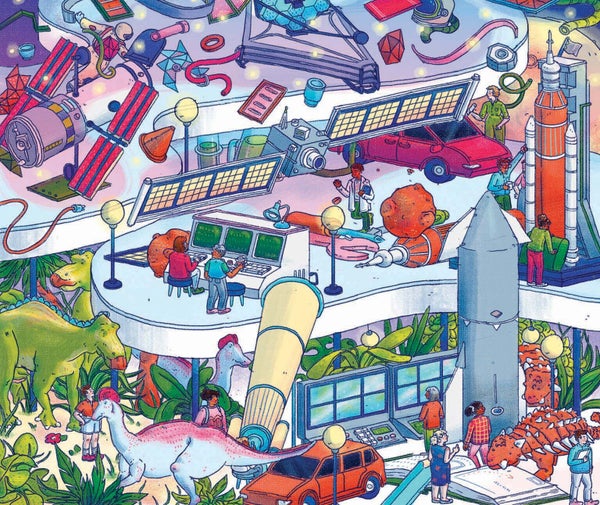The close of a calendar year is a chance to reflect on the relentless procession of time into the present and any new beginnings the future holds. Humans are enamored with the end of the year—not only for nostalgia’s sake but also for the cognitive clarity it offers amid so much uncertainty.
As we look back, then, what was most significant about 2022? The COVID pandemic continues to plague the world. Its dizzying spectrum of destabilizing symptoms has helped fuel the resurgence of fascism everywhere, including the U.S. Meanwhile the specter of atomic annihilation stalks the globe again, via Russia’s ruinous aggression against Ukraine, which is increasingly a not-so-proxy war with NATO. Staggered by these and other blows, the world’s economy appears to be spiraling into yet another recession.
Against the dark background of such events, we may find some hope by gazing up into the heavens. In the long arc of time, when the dust settles on 2022, the most significant happenings on Earth may arise from events that were celestial in nature.
On supporting science journalism
If you're enjoying this article, consider supporting our award-winning journalism by subscribing. By purchasing a subscription you are helping to ensure the future of impactful stories about the discoveries and ideas shaping our world today.
This year marked a bittersweet milestone in humanity’s still nascent efforts to transcend the limits of our lonely, beleaguered world: the 50th anniversary of the last footsteps on the moon, made in 1972 by the late Apollo astronaut Eugene Cernan. That such feats were achieved so long ago is inspirational, but there is bleakness in the fact that 50 years on they remain unparalleled. In that span, however, the technologies required for such voyages have gradually spread across the globe, so that now crewed lunar exploration—perhaps even settlement—lies in reach of numerous nations and even private companies. These efforts dovetail with seemingly outdated dreams of establishing an enduring human presence on worlds beyond Earth. But, reimagined for the 21st century, being “multiplanetary” could become less about pursuing some dubious extraterrestrial Manifest Destiny and more about finding bold ways to reduce our crushing collective weight on the biosphere.
And 2022 brought us a new eye on the cosmos: the U.S.-led multinational James Webb Space Telescope (JWST). The project is in some respects the most ambitious and exacting technological construct ever built and, having persevered through more than two decades of development, now offers not only unexpected discoveries about our deepest cosmic origins and current galactic context but also further proof that we mere humans can come together to perform extraordinary, seemingly impossible tasks.
Perhaps most significant of all, however, was the successful Double Asteroid Redirection Test, or DART, a spacecraft sent by NASA to smash into and decisively shift the orbit of a small space rock, Dimorphos. Never before has humanity reached out to so deliberately strike such a lasting chord in the music of the spheres. Dimorphos’s altered trajectory will now resonate through the solar system’s motions until the sun itself goes dim. Given sufficient forewarning (which thankfully could come from JWST and other telescopic sentinels), the technique could be used in the future to deflect planet-threatening impactors, fending off the gruesome fate that befell the dinosaurs some 66 million years ago. Although DART was an American mission, its potential benefits extend to all now living and even those yet to be born—and are thus eminently worth celebrating.
What’s certain—and certainly significant—is that the very same rapid, rampant technological developments that have allowed such achievements also require resource consumption on a scale that is rendering our global civilization more fragile. But this does not mean, as shortsighted critics insist, that striving to send humans to live and work in space must be an escapist techno- fantasy abdicating our stewardship over Earth.
DART demonstrated that we possess the power to prevent one kind of natural apocalypse—a subtle hint that eventual further advances in our off-world capabilities might also help us prevent many possible others of our own making. Against long odds, the success of JWST showed us the power of institutional persistence and international collaboration in daring to attempt audacious things. And each new astronautical foray is a constant reminder of our common humanity, irrespective of other labels applied by virtue of race, gender, nationality or creed. At year’s end, let us remember that our actions and aspirations in outer space define us just as much as anything we do right here on Earth.
